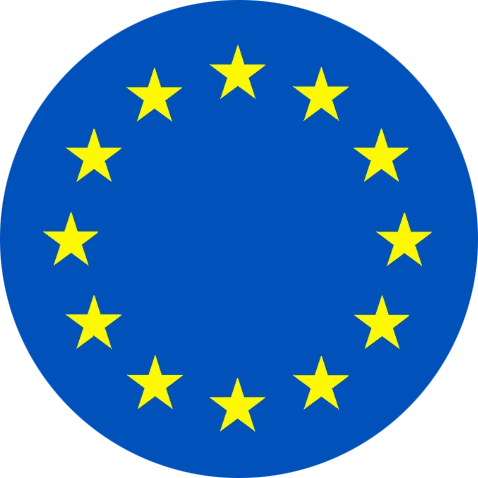Summary:
- US bond markets have been more volatile than their peers this year and investors have appeared increasingly open to diversifying their investments outside the US.
- We would caution that 2025’s “sell America” trade may have been a tactical trend, rather than a secular shift. There are, however, potential secular shifts in Europe, where we see opportunity.
- A disciplined approach to fixed income, and a diverse opportunity set may help investors add value to their portfolios and even potentially turn volatility to their advantage.
Fixed income has been almost twice as volatile through the current rate cycle
Global rate cutting environments have historically been “golden ages” for bond markets. During the last five cycles, US bonds delivered total returns between 17% and 32%. So far this cycle, fixed income returns have been following the script overall, but volatility has been almost twice as high as usual (Figure 1).
Figure 1: Fixed income is following the overall playbook of previous rate cutting cycles, but with double the volatility1
There have been several drivers of this volatility, such as concerns around inflation, global trade and fiscal deficits. Increasingly, geopolitical uncertainty has also been a driver, given changing tariff policies and military conflicts in Ukraine and the Middle East.
Navigating an era of excess fixed income volatility
Bonds are contractual assets. Their long-term yields are locked in from the point of purchase (absent default).
The good news is that those long-term yields have risen and can now offer a meaningful advantage over cash (Figure 2). When yield curves steepen, we also often see the potential for price gains from the “roll down” effect: as bonds move closer to maturity, yields tend to fall and prices often rise. Steep yield curves therefore allow investors to earn higher yields and potential price gains.
Figure 2: Higher yields and steep curves may offer income and price gains from the “roll down” effect2
As such, building a robust bond market allocation could offer essential diversification and the added benefit of a potentially a reliable return stream.
Expanding fixed income horizons outside the US
Bond investors are also considering expanding their horizons beyond their home-base or domestic markets to further smooth out volatility in their portfolios.
This has been particularly noticeable in the US. The administration’s hawkish trade policies have led to rising concerns about foreign demand for US financial assets. US bond markets have notably been more volatile than their peers over the last 18 months, out of step with historical norms.
Even US Treasuries – considered the global “safe havens” of fixed income – have not been unscathed from US market volatility this year.
In April, after “Liberation Day”, the S&P 500 Index suffered a 12.1% sell-off, but 10-year Treasury yields unexpectedly rose by 16 basis points (bp), suffering a temporary bout of dysfunction, partly on concerns about foreign demand. Most of the US’ developed market peers fared better however, with yields generally falling by 3bp to 20bp. Non-US bond markets have also traded more in line with historical norms this year (Figure 3).
As a result, for the first time in recent memory, US and international investors have appeared increasingly open to diversifying their investments outside the US. For many bond investors, this has meant re-thinking their particularly strong “home bias”.
Global fixed income has consistently delivered higher risk-adjusted returns over many developed markets.
Figure 3: The US has been the most volatile major fixed income market so far this year3
Secular shifts versus tactical trends
As investors consider expanding their fixed income assets globally, we would caution that 2025’s “sell America” trade may have been a tactical trend, rather than a secular shift. When investing globally, separating the secular themes from the tactical trades impacting markets may be a key to success.
Opportunities in Europe
Although core European markets have outperformed the US so far this year, we believe investors need to be cautious of the bloc’s longer-term structural challenges.
For example, energy costs are some of the highest in the world4 and provide a major roadblock to industrial activity, which is a consideration for corporate bond markets, while aging demographics also loom over the long term.
Nonetheless there are potentially encouraging secular shifts to consider. German politicians’ decision to amend the “debt brake” earlier this year has the potential to unlock half a billion euros of defense and infrastructure spending.
This may have been a concern in government bond markets, reflected by German bunds initially selling off on the news. However, we considered the move to be an overreaction (and a potential investment opportunity) as Germany, given its budget surplus, may have the fiscal headroom to increase spending.
The spending may be beneficial for corporate bond markets, particularly for corporate issuers aligned to it, offering opportunities for sector and security selectors. In general, euro investment grade markets also offer a spread premium over their US equivalents for (in our view) no clear fundamental justification, albeit this differential has come down significantly after hitting a ~70bp peak last year, in our view justifying a selective approach.
Looking deeper into Europe can also unlock opportunities. Peripheral Europe has been a bright spot in recent years. For example, Spain grew faster than any G10 country in 2024 and its sovereign spreads tightened against Germany and inverted against France. Elsewhere, European ABS markets (as with their UK and Australian counterparts) offer some clear advantages over US ABS, such as lower default rates5 and more creditor-friendly environments in some markets. The continent also offers “esoteric” structured credit opportunities that can offer potential spread premiums over corporate bonds.
Opportunities elsewhere
UK bonds have come under pressure partly given the gilt market’s relatively high interest rate risk. The 2022 gilt crisis was also a notable driver of volatility in recent years. However, we our view of the debt management office’s supply intentions across the curve, we believe long-dated UK bonds may offer value for international buyers.
Elsewhere, Japan has been the “odd one out”. While ~70% of central banks last moved to cut rates, the Bank of Japan is still discussing hikes, given delayed inflation relative to other regions. Once it reaches the top of its rate cycle, it may enter its own fixed income “golden age.” We also see potentially compelling yield and spread opportunities in other regions, such as emerging markets, although downside risks remain and opportunities differ by region.
The US still offers unrivalled depth and unique opportunities
Looking beyond the US should certainly not mean ignoring it. Ultimately, we see no alternative to the US for reserve currency status. The debate about deficits and term premia – the additional yield that investors demand for holding longer-term versus shorter-term bonds - will continue. Repeats of the “Liberation Day” liquidity squeeze in long-dated Treasuries cannot necessarily be ruled out. However, if long-term Treasury yields were to reach the 5% to 6% region, we believe they would once again become attractive to many global investors. Further, the US Federal Reserve (the Fed) would stand ready in the event of more severe disruptions, and it may be a matter of time before investors once again warm to long-dated US duration exposure.
The US market currently offers a number of opportunities that we believe global investors should consider. After all, its bond market is by far the world’s largest and most liquid. The $7 trillion agency mortgage-backed securities (MBS) market alone is larger than most countries’ entire fixed income market capitalizations and is a market without a non-US counterpart.
Many opportunities also lie outside the mainstream, like so-called “esoteric” ABS, an asset class featuring innovative structures and asset types. It is a key vehicle for financing the digital infrastructure (like datacentres, fiber-optic cables and cell towers) powering tech innovation.
An intentional approach
Bonds may be well placed to withstand a challenging backdrop. Yet geopolitical uncertainty and volatility can still be difficult for investors to navigate. A disciplined approach to fixed income and a diverse opportunity set may help investors add value to their portfolios and even potentially turn volatility to their advantage.




























